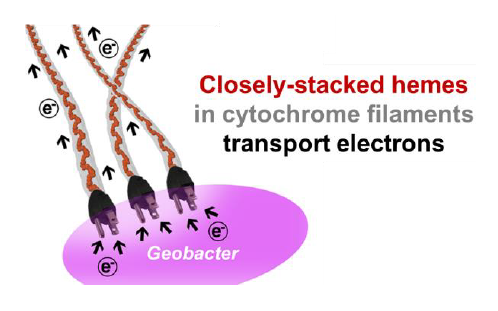Physics Colloquium with Sibel Yalçın on How Bacteria Use Quantum Effects to Respire without Oxygen
I will present our recent discoveries that solve a longstanding mystery of how nanowires move electrons to soil minerals or help generate electricity. By correlating cryo-electron microscopy with multimodal functional imaging and a suite of electrical, biochemical and physiological studies, we find that nanowires are made up of polymerized cytochrome proteins that transport electrons via seamless stacking of metal-containing heme molecules over micrometer distances (Cell 2019, Nature ChemBio 2020, Nature 2021). As metalloproteins were not known to polymerize, the discovery of these cytochrome nanowires opens an entirely new field for the development of next-generation living bioelectronics. My recent experimental studies on individual nanowires show inherent spin polarization and the highest electronic conductivity reported on proteins (> 100 S/cm with ultrafast electron transfer rate of ~200 fs). Computational studies suggest that quantum coherent transport accounts for the high conductivity of these nanowires. Identifying the role of quantum effects in these processes will help understand, predict, and ultimately control extracellular electron transfer by protein nanowires used by diverse environmentally important microbes to capture, convert and store energy. Moreover, cytochrome nanowires acting as Biocompatible Quantum Probes at room temperature will enable a route to engineer quantum technologies based on biology.


